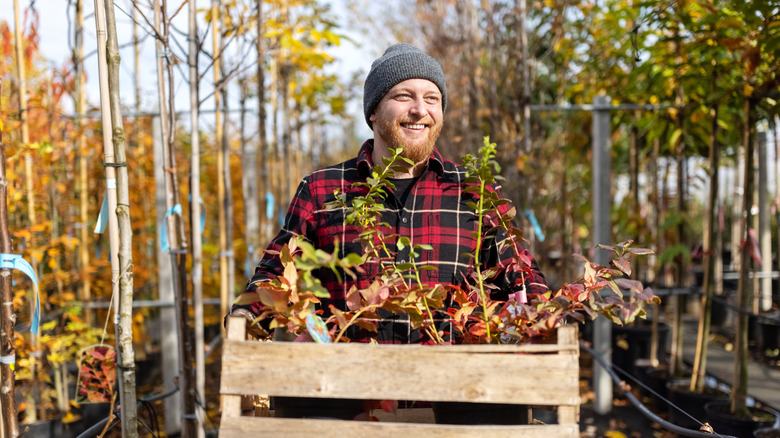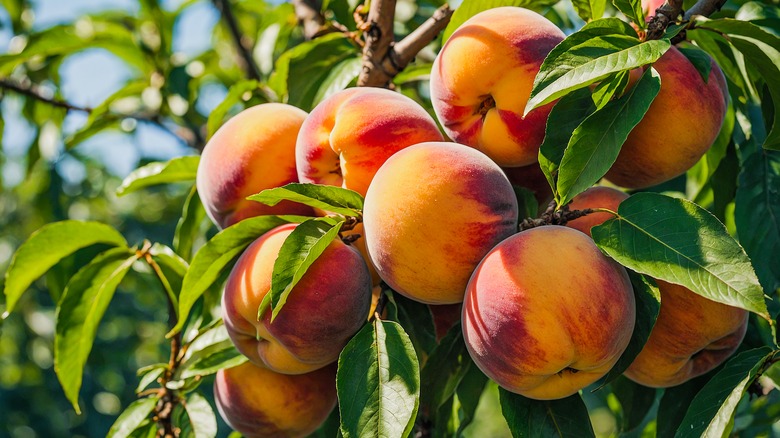Why Fall Is The Ideal Time To Plant This Scrumptious Fruit Tree In The Garden
Whether baked into a delicious pie or eaten fresh off the tree, peaches are the taste of summer. With some care and preparation, you can enjoy these sweet, tangy fruits from your own backyard tree in the summers to come, and you can start making your plans for planting as summer winds down to a close. Although spring is an ideal time for planting trees, fall can also be one of the best times to plant a peach tree, depending on your location. Planting in spring can leave your new tree exposed to the heat of summer, which can stress a young fruit tree. And management of moisture levels and irrigation can be a concern, especially in warmer climates. Additionally, if you transplant a peach tree in fall, this can give the root system more time to get established before the springtime growth season begins.
Wait until colder weather rolls around in October or later, as you'll want to plant trees that are dormant — that is, losing or bare of leaves. Dormant trees will have more carbohydrates stored in their roots, which will give them a boost in the growth season. Though bare root trees might be a better choice than container trees, since they are less likely to be root bound or overly costly, it may be a little more difficult to source dormant bare root fruit trees from your local nursery in the fall as opposed to late winter or early spring. So you may have more luck from online sources.
How to select and plant peach trees
The common peach is actually native to Asia, where it has been cultivated by humans for thousands of years. Peach trees are suited to USDA Hardiness Zones 5 through 9, however, hundreds of cultivars are available, some of which are more cold tolerant than others. Do a bit of research and choose one that's best suited to your area. (Fun fact: Nectarines are peach cultivars! A recessive gene gives them their hairless quality.) Once you've consulted a list of types of peach trees and selected the most appropriate cultivar for your yard, select the site for your tree. This should be in full sun with well-draining, acidic soil.
When digging a hole to plant a bare root specimen, reference the soil line on the tree — a line or mark of old soil on the tree that shows how deep it was buried — so the depth is consistent with the nursery conditions. For width, just make sure the hole is wider than the root ball, so that no roots are bent or broken. If your tree is container grown, you may have to lay the tree on its side and carefully prune any roots that have grown in a circle before planting. Peaches are typically grafted onto another rootstock, so make sure when you're planting, you leave this slight bump (called the graft union) two or three inches above the soil. Otherwise, the grafted tree may put down its own roots. Don't fertilize the planted tree, but water it in immediately and check that the soil doesn't compact down too far. Add more soil if it sinks.

